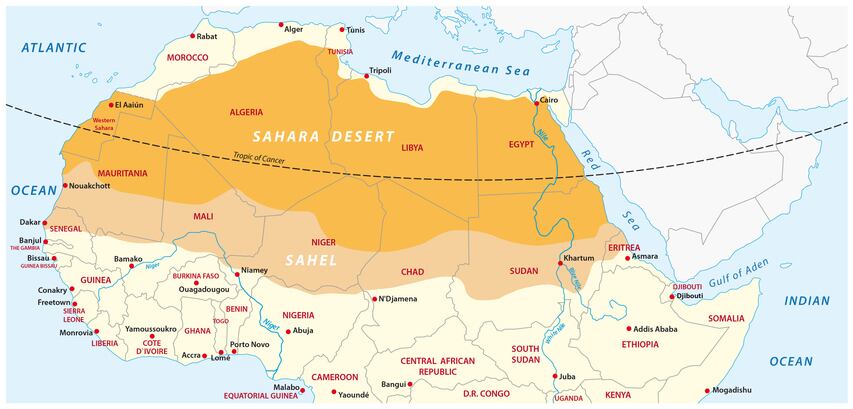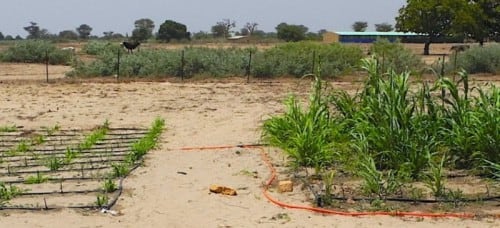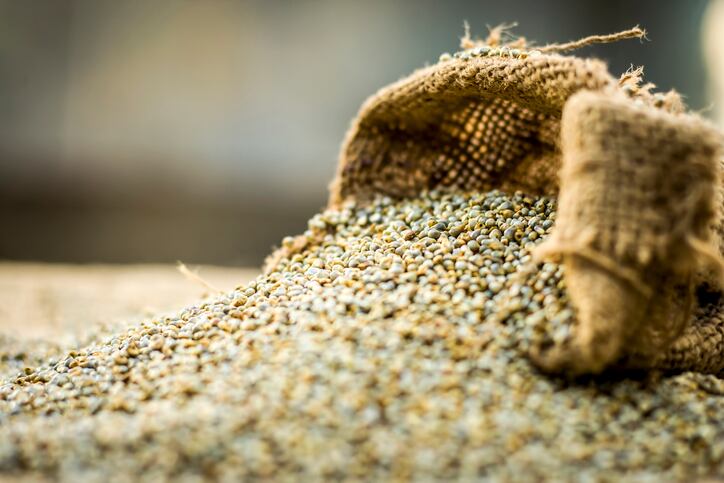Millet has been growing in popularity as an ancient grain among consumers in Western Europe. But it is also a staple food for millions of people living in the arid and drought-prone Sahel region.
Scientists have recently discovered a natural way to dramatically increase their yield by planting native woody shrubs on farmland, particularly one species

called Guiera (Guiera senegalensis). The shrubs have long roots, which draw in water from the ground soil, that they do not absorb at night. This excess water is used by the pearl millet (Pennisetum glaucum) plants.
The shrubs have been growing in the region for thousands of years, estimate the researchers, but their benefit to agriculture has not been recognised until now. Some farmers remove them or burn them to make way for cropland.
"We proved that 'bio-irrigation' by these shrubs is happening and it's the first time this has been shown for crop production," lead researcher and professor of soil microbiology at Ohio State University Richard Dick said. "This is a native plant and it's free and easy to grow - everything about this is positive."
The scientists now intend to conduct pilot tests with farmers throughout the Sahel, fine-tuning the technique before scaling it up and rolling it out across the region.
According to data from the United Nations’ Food and Agriculture Organisation (FAO), eight of the top ten global producers of millet in 2016 were in Africa: Niger, Mali, Nigeria, Sudan, Burkina Faso, Ethiopia and Chad. The biggest producer is India, which in 2016 produced over 10 million tonnes (10,280,000).
While millet farmers in South Asia and South America often resort to fertilisers and artificial irrigation, this is unaffordable to the Sahel region's many subsistence farmers where 97% of farmland is dependent on rain for irrigation.
"This is a semi-arid region, where it rains only part of the year," Dick said. "Some years, there are major droughts and people go hungry. The ultimate solution is going to be whatever is locally available, and finding these answers and working with the local farmers to consider potential agricultural techniques is paramount."
According to the Global Hunger Index, under-nourishment and food insecurity are of “serious” concern in West Africa while the United Nations estimates one-third of the region’s population face food insecurity.
Three-fold benefits
The advantages Guiera brings are actually three-fold. In addition to drawing in water through this process known as hydraulic redistribution (HR), they also improve the soil quality by harbouring beneficial microbes and can speed up the time to harvest by about 15 days.
Publishing their findings in Frontiers in Environmental Science, the US and Senegalese researchers describe what they call the ‘optimised shrub system’. This method involves increasing the shrub density in farmers field from fewer than 300 per hectare, which is the current average, to around 1,500. Farmers also use the shrub leaves as fertiliser rather than burning it.

The shrubs grow deep roots that are between 30 and 40 feet long to find moisture beneath the ground surface. When millet is grown next to them, it can share the water that is drawn in by the long roots.
This is particularly so at night when the shrubs stop photosynthesising because the porous stomata on their leaves close in the dark. This means that, rather than being lost through their leaves, the water they absorb leaks out onto the surface soil where the millet plants can soak it up.
Millet plants grown in an area with dense shrub growth in a village in Senegal’s Peanut Basin were much taller and had much higher yields than a control area with few shrubs.
“Surprisingly, the largest plants in the field were in the driest conditions, in the presence of shrub roots,” write the study authors. “Thus one can only conclude HR water must have kept millet growing, and done so very efficiently.”
The findings could also be applied to other countries - even other crops.
“There is no reason why other crops cannot benefit,” said Dick, who has tested the same method on peanuts and found higher yields.
Richard Dick works with the Agro-Shrub Alliance, a non-profit organisation that provides training and support to smallholder farming families across the West African Sahel, helping them adopt shrub-based farming.
"[There has to be] farmer-to-farmer promotion of this technology," he said, with "a success story" to showcase the benefits. This could take the form of a small group of dedicated farmers with professional support over at least a two to three-year period, he added.
“The shrub does all the work,” he told FoodNavigator, “and if there are other shallow-rooted plants in the presence of shrubs, they can take advantage of the hydraulically lifted water.
“However, it should be noted that millet and peanut are particularly adapted for semi-arid conditions and as such may be better adapted to take advantage of the small amounts of water provided by hydraulic redistribution. [Other crops such as] maize and tomato have higher water requirements and it may well be that hydraulic redistribution may have no or limited potential to help these crops.
"Research is needed to confirm this,” he added.
The study concludes: “For highly mechanized semi-arid agroecosystems in other parts of the world, engineered intercropped systems for rain-fed crops should be investigated as a novel approach to manage water for crops to buffer against drought."
Source: Frontiers in Environmental Science
“Hydraulic Redistribution by Native Sahelian Shrubs: Bioirrigation to Resist In-Season Drought”
Available online 18 September 2018, doi.org/10.3389/fenvs.2018.00098
Authors: Nathaniel A. Bogie, Roger Bayala, Ibrahima Diedhiou, Martha H. Conklin, Marilyn L. Fogel, Richard P. Dick and Teamrat A. Ghezzehei


